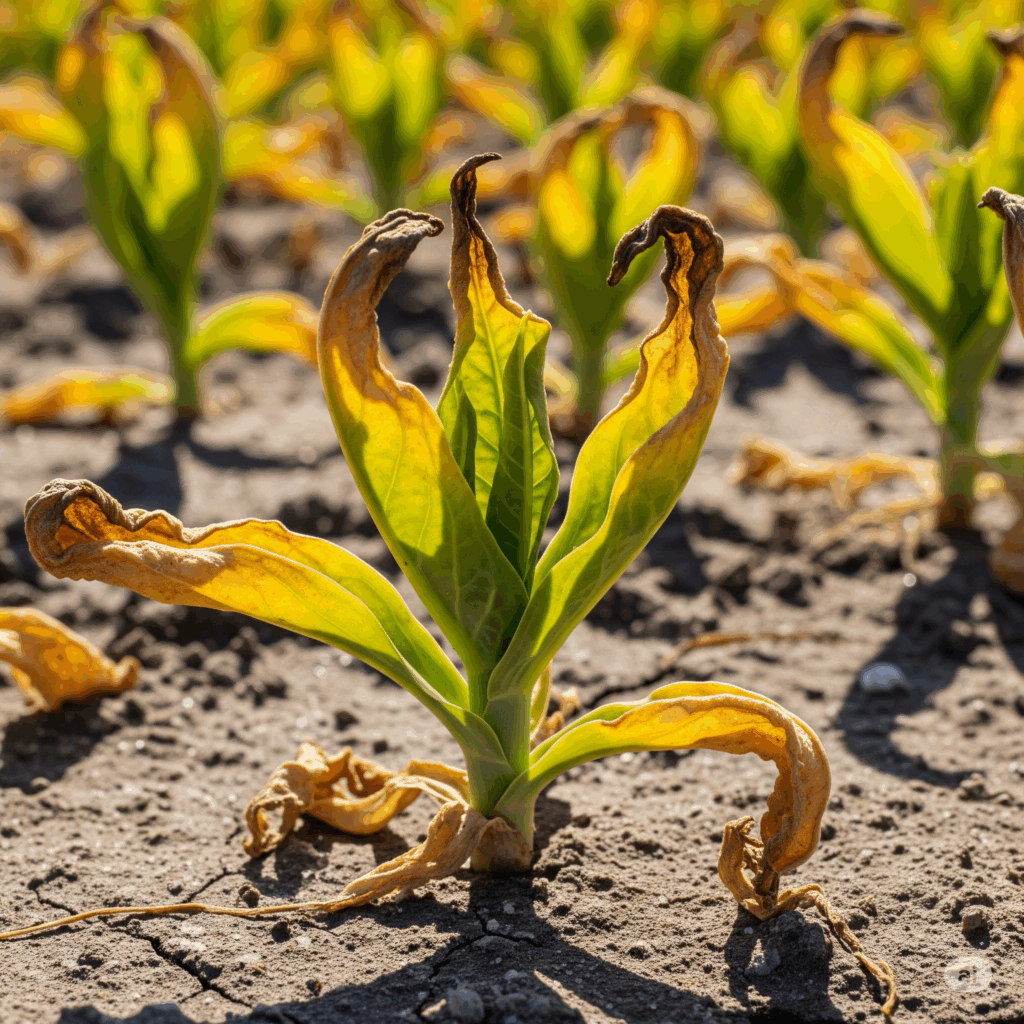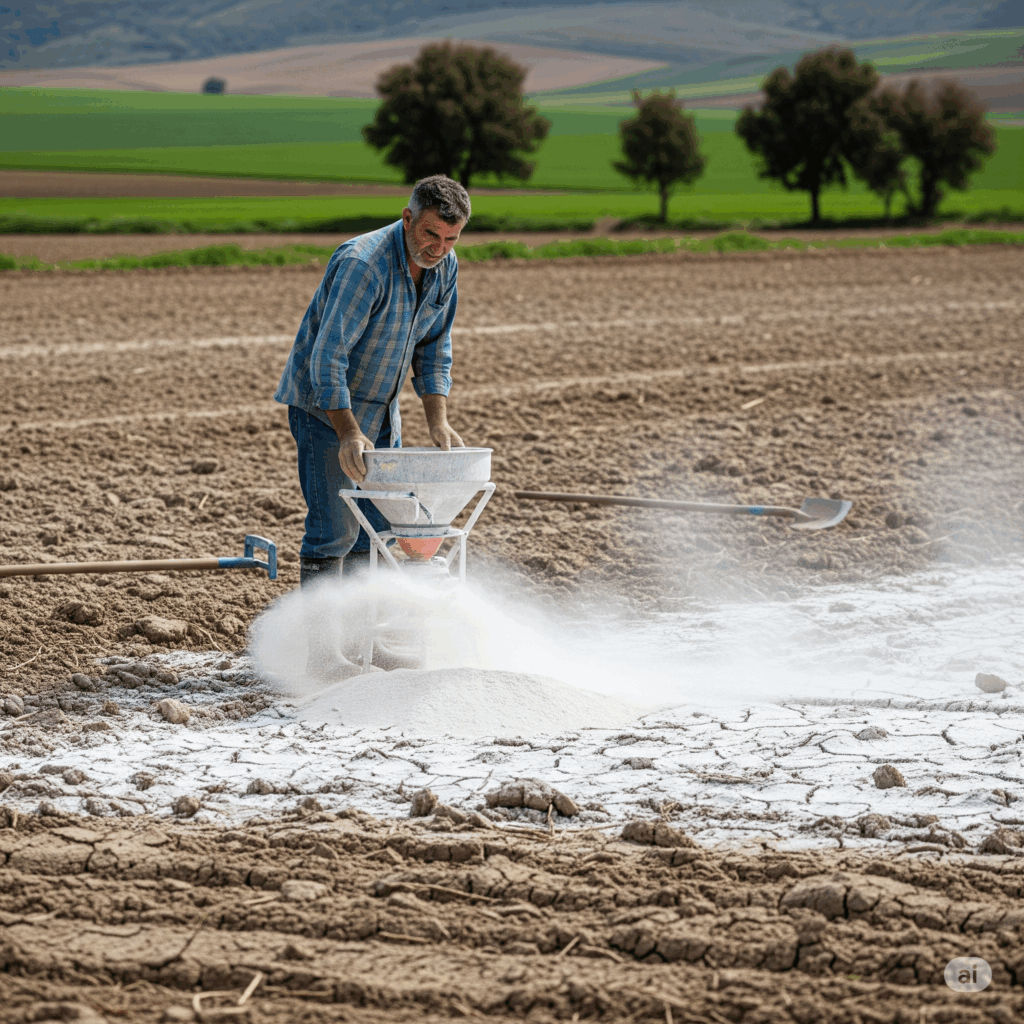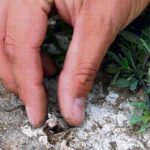In the vast world of agriculture, soil quality plays a leading role in the health and productivity of crops. Among the various types of soils that exist, saline soils represent a significant challenge for farmers worldwide. Characterized by an excessive accumulation of soluble salts, these soils can severely limit plant growth and even render land unproductive. In this article, we will delve into what saline soils are, how they form, their effects on agriculture, and, most importantly, what strategies can be implemented for their management and recovery.

What are Saline Soils?
A saline soil is one that contains an unusually high concentration of soluble salts. These salts, composed of cations such as sodium ($Na^+$), calcium ($Ca^{2+}$), magnesium ($Mg^{2+}$), and anions such as chloride ($Cl^-$), sulfate ($SO_4^{2-}$), and bicarbonate ($HCO_3^-$), accumulate in the root zone of plants. The standard measure to determine soil salinity is the electrical conductivity (EC) of the soil saturation extract. A soil is considered saline when its EC is greater than 4 decisiemens per meter (dS/m).
How are Saline Soils Formed?
The formation of saline soils is a complex process influenced by various factors, both natural and anthropogenic:
- Arid and semi-arid climate: In regions with low rainfall and high evaporation rates, water containing dissolved salts rises to the soil surface by capillarity. As the water evaporates, the salts are deposited in the topsoil layer.
- Irrigation with poor quality water: The use of irrigation water with high salt concentrations can gradually introduce large amounts of salts into the soil. If drainage is inadequate, these salts accumulate over time.
- Seawater intrusion: In coastal areas, rising sea levels or the overexploitation of coastal aquifers can lead to the intrusion of saltwater into terrestrial soils.
- Weathering of saline parent rocks: The decomposition of rocks containing saline minerals can release salts into the soil.
- Poor natural or induced drainage: Deficient drainage prevents the natural leaching of salts from the soil profile, favoring their accumulation.

Impacts of Salinity on Agriculture
The presence of high salt concentrations in the soil has significant detrimental effects on plant growth and development:
- Osmotic stress: The high concentration of salts in the soil solution makes it difficult for plant roots to absorb water. Water tends to move from an area of lower solute concentration (inside the root) to one of higher concentration (in the soil), which can cause physiological dehydration in the plant, even when sufficient water is available.
- Ionic toxicity: The accumulation of specific ions such as sodium ($Na^+$) and chloride ($Cl^-$) in the leaves can reach toxic levels, damaging plant cells and affecting essential metabolic processes such as photosynthesis.
- Nutritional imbalances: The presence of high concentrations of certain ions can interfere with the absorption of other essential nutrients, such as potassium ($K^+$) and calcium ($Ca^{2+}$), leading to nutritional deficiencies.
- Alteration of soil structure: In some cases, especially in sodic soils (which often coexist with salinity), excess sodium can disperse clay particles, deteriorating the soil structure, reducing water infiltration and aeration.
As a result of these effects, saline soils often lead to reduced crop yields, stunted growth, leaf burn, and even plant death, depending on the sensitivity of the crop and the level of salinity.
Management and Recovery of Saline Soils
Effective management of saline soils requires an integrated approach that combines various preventive and corrective strategies. Some of the most common techniques include:
Soil Washing or Leaching
This technique involves the application of large amounts of good quality water to dissolve the accumulated salts and carry them out of the root zone. For leaching to be effective, it is crucial to have a good drainage system that allows the evacuation of the leached saline water.

Drainage Improvement
Installing or improving subsurface drainage systems (perforated pipes) or surface drainage (channels) helps to remove excess water and dissolved salts from the soil profile, preventing their accumulation.
Chemical Amendments
In some cases, chemical amendments can be used to help displace salts or improve soil structure. For example, the application of gypsum ($CaSO_4 \cdot 2H_2O$) can help replace sodium in sodic soils, improving water infiltration and facilitating the leaching of salts.

Selection of Salt-Tolerant Crops
Choosing to cultivate species and varieties that are more tolerant to saline conditions is an important strategy, especially in areas where complete soil recovery is difficult or costly. Some examples of salt-tolerant crops include barley, sugar beets, cotton, and some varieties of sorghum.

Irrigation Management
Implementing efficient irrigation practices that minimize salt accumulation is fundamental. This can include the use of drip irrigation or micro-sprinklers, which apply water more locally and reduce surface evaporation. It is also important to monitor the quality of irrigation water.
Use of Organic Matter
The addition of organic matter to the soil can improve its structure, increase water retention (paradoxically, helping to dilute salts in the soil solution), and improve nutrient availability, which can help plants better tolerate saline stress.
Conclusion: An Adaptive Approach to a Persistent Challenge
Saline soils represent a significant obstacle to sustainable agricultural production in many regions of the world. However, through a deep understanding of their causes and effects, and the implementation of appropriate management and recovery strategies, it is possible to mitigate their impact and maintain land productivity. The key lies in an adaptive approach that considers specific local conditions and combines various techniques to address this persistent challenge.
Do you have experience working with saline soils? Share your strategies and learnings in the comments!
 AgronoBlog – Agriculture Blog
AgronoBlog – Agriculture Blog 
